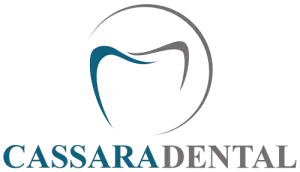Inlays and onlays in Mountain View, CA, are used to restore the structure of a tooth after it becomes damaged or suffers decay. Just like a filling, an inlay is used to replace a small portion of the tooth. An onlay also fills a small portion of the tooth, but then it extends onto the chewing surface, wrapping over to replace one or more of the tips (cusps) of the tooth. Since inlays and onlays are usually created in a dental lab at another location as opposed to in the office during the patient’s visit, these dental restorations are referred to as indirect fillings. After the inlay or onlay is created and returns from the lab, the dentist fits and bonds it to the surface of the patient’s tooth.
What is the Difference Between an Inlay, an Onlay and a Filling?
An onlay covers the entire chewing surface of the tooth, including one or more cusps. An inlay is designed to fit inside the grooves of the teeth that are located within the cusps. An inlay may be used instead of a standard filling.
Your dentist determines which type of restoration is most appropriate for you based on the amount of tooth structure you need replaced.
Your dentist may recommend an onlay if:
- The tooth has extensive damage that affects at least one tip of a tooth.
- The biting surface of a tooth has a substantial amount of damage.
Your dentist may recommend an inlay instead of a standard filling if:
- The damage to the tooth is extensive: If a tooth has a large filling, it typically becomes weak.
- The tooth is fractured, broken or decayed in an area that does not affect its cusp.
- The injury to the tooth does not warrant the need for a crown.
Standard fillings actually weaken the structure of a tooth by up to 50 percent; whereas, inlays and onlays strengthen it. Following an inlay or onlay procedure, the treated tooth can bear up to 75 percent more chewing force, which allows these restorations to last anywhere from 10 to 30 years.
What to Expect During the Office Visits for Inlays and Onlays in Mountain View, CA
The inlay and onlay procedures are basically identical. Unless the dentist has a milling unit in the office, two visits are required.
The First Visit
During the initial dental visit, the tooth is prepared: It is during this visit that the damaged or decayed portion of the tooth is removed.
The procedure:
- Before removing the damaged or decayed part of the tooth, local anesthesia is administered.
- Since inlay and onlay procedures are conservative, the dentist removes as little of the patient’s tooth structure as possible. The dentist can use a drill, air abrasion device or a dental laser to remove this material.
- Once the damage and decay are removed, a mold of the patient’s tooth is created. This mold is sent to the dental lab.
- The patient receives a temporary restoration. This temporary restoration will remain in place until the dental lab fabricates the permanent restoration and it can be bonded to the tooth; however, if the dentist has an in-office milling unit (e.g., CEREC), the need for a temporary restoration is eliminated because the inlay or onlay can be created and bonded on the same day the mold is taken.
The Second Visit
The procedure:
- Once the permanent restoration is created and ready to place, the dentist removes the temporary restoration (if applicable) and cleans the tooth.
- The dentist will check the fit of the inlay or onlay before bonding it to make sure it fits properly.
- As long as the restoration fits properly, the dentist permanently bonds it to the tooth.
- For aesthetic reasons, the dentist polishes the restoration.
Traditionally, due to its strength, these dental restorations were created using gold. Today, these restorations can still be made from gold; however, many patients receiving inlays and onlays in Mountain View, CA, are choosing to have their restorations made using materials like porcelain and resin. Using these materials, patients can have their restorations created in a color that closely matches the natural color of their teeth.
Contact us today if you have any questions or to schedule an appointment.

